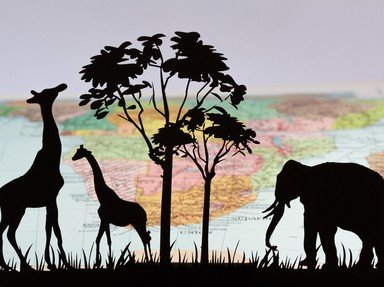Quiz Answer Key and Fun Facts
1. This arboreally-named creature actually inhabits water, not the forest. Can you guess its name?
2. The two spiny creatures in this photo are deep-sea spiders.
3. This animal is so puffed-out, it's nearly impossible to view its long auricles! Can you name it?
4. This colorful guy is all dressed up, ready to court the ladies. When he heads back to the man cave, though, his color will change, and he'll be able to sing Kermit the Frog's lament. What animal is this?
5. This tall fellow, whose feet are unusually large, is nevertheless named for its impressive proboscis. Can you name him?
6. This is the discarded shell of an insect. Do you know which insect has left it behind?
7. This guy finds a way to blend in pretty much wherever he goes. What adaptable sort of animal is pictured?
8. What is the animal in this picture?
9. This spider doesn't use a web to catch its prey. It has other predatory talents. Can you name the spider with the lovely big green eyes?
10. This creature's name is as strange as its appearance. It is actually a moth, shown here in its caterpillar form. What is it called?
Source: Author
austinnene
This quiz was reviewed by FunTrivia editor
guitargoddess before going online.
Any errors found in FunTrivia content are routinely corrected through our feedback system.


